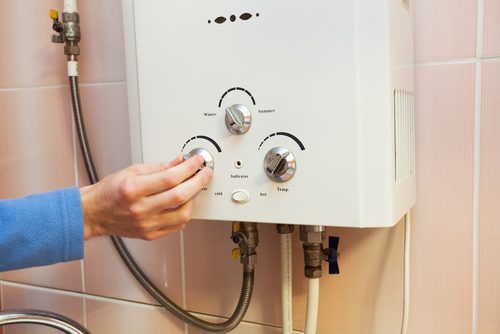We have stumbled on this article involving How to Maintain a Hot Water Heater in a Few Simple Steps directly below on the internet and think it made good sense to quickly share it with you on this page.

Warm water is crucial for daily convenience, whether it's for a revitalizing shower or washing meals. To guarantee your warm water system runs efficiently and lasts much longer, routine upkeep is vital. This article provides useful ideas and understandings on how to maintain your home's warm water system to stay clear of disturbances and costly repair work.
Intro
Keeping your home's hot water system might seem complicated, however with a couple of straightforward actions, you can guarantee it operates smoothly for many years to come. This guide covers whatever from recognizing your hot water system to do it yourself upkeep tips and understanding when to call professional assistance.
Relevance of Maintaining Your Warm Water System
Regular maintenance not just prolongs the life expectancy of your warm water system yet also ensures it operates effectively. Ignoring upkeep can cause lowered efficiency, higher power bills, and also premature failure of the system.
Indications Your Warm Water System Needs Maintenance
Understanding when your warm water system requires focus can prevent major problems. Watch out for indicators such as irregular water temperature level, strange noises from the heater, or rustic water.
Flushing the Hot Water Heater
Flushing your water heater removes sediment accumulation, enhancing effectiveness and extending its life.
Monitoring and Changing Anode Rods
Anode poles protect against deterioration inside the container. Inspecting and changing them when worn is vital.
Facility Concerns Calling For Specialist Aid
Instances consist of major leaks, electric issues, or if your water heater is consistently underperforming.
Regular Specialist Maintenance Perks
Expert maintenance can consist of complete assessments, tune-ups, and ensuring compliance with safety criteria.
Checking and Adjusting Temperature Level Setups
Adjusting the temperature setups guarantees ideal performance and safety and security.
Do It Yourself Tips for Maintenance
You can do a number of upkeep jobs yourself to keep your warm water system in leading condition.
Looking for Leakages
Consistently check pipes and connections for leakages, as these can cause water damages and greater expenses.
Understanding Your Warm Water System
Prior to diving into upkeep jobs, it's valuable to recognize the fundamental components of your warm water system. Normally, this includes the water heater itself, pipelines, anode rods, and temperature level controls.
Regular Monthly Maintenance Tasks
Normal regular monthly checks can help capture minor issues prior to they escalate.
Testing Stress Alleviation Valves
Checking the pressure relief valve ensures it operates correctly and protects against extreme stress buildup.
Shielding Pipes
Insulating warm water pipes decreases heat loss and can conserve energy.
When to Call an Expert
While do it yourself maintenance is helpful, some problems call for expert proficiency.
Final thought
Regular upkeep of your home's hot water system is necessary for performance, durability, and price savings. By adhering to these suggestions and recognizing when to seek expert help, you can make sure a reputable supply of warm water without unforeseen disturbances.
How to Maintain an Instant Hot Water Heater
- Before tinkering with your hot water heater, make sure that it’s not powered on. You also have to turn off the main circuit breaker and shut off the main gas line to prevent accidents. Also turn off the water valves connected to your unit to prevent water from flowing into and out of the appliance.
- 2. When you’re done, you have to detach the purge valves’ caps. These look like the letter “T” and are situated on either side of the water valves. Doing so will release any pressure that has accumulated inside the valves while at the same time avoid hot water from shooting out and burning your skin.
- 3. When the purge valves’ caps are removed, you have to connect your hosing lines to the valves. Your unit should have come with three hoses but if it didn’t, you can purchase these things from any hardware or home repair shops. You can also get them from retail stores that sell water heating systems. Read the user’s manual and follow it to complete this task properly. When the hosing lines are connected, open the purge port’s valves.
- 4. You should never use harsh chemical cleaners or solutions when cleaning your unit. Make use of white vinegar instead. It should be undiluted and you’ll probably use about 2 gallons.
- 5. Now flush your water heater. This task should probably take about 40 minutes. We can’t give you specific directions for this because the procedure is carried out depending on the type, model and brand of your heater. With that being said, refer to the user’s manual.
- 6. When you’re done draining the unit, you have to turn off the purge port valves again. Remove the hosing lines that you earlier installed on each of the water valves. Put the valve caps (purge port) back in their respective places and be very careful so as not to damage the rubber discs that are found inside these caps.
- 7. Now that everything’s back in place, check your user’s manual again to find out how to reactivate your water heating system.
- 8. Once it is working, turn one of your hot water faucets on just to let air pass through the heater’s water supply pipes. Leave the tap on until water flows smoothly out of it.
https://www.orrplumbing.com/blog/2014/september/how-to-maintain-an-instant-hot-water-heater/

I'm just very enthusiastic about What Kind of Maintenance Do Water Heaters Need? and I'm hoping you liked my blog posting. Sharing is nice. You never know, you may very well be doing someone a favor. We truly appreciate reading our article about How to Maintain Your Water Heater & Prolong its Life.
Click Here
Comments on “Ways to Maintain Your Home's Hot Water System Functioning WellEssential Care Strategies for Your Home's Hot Water System”